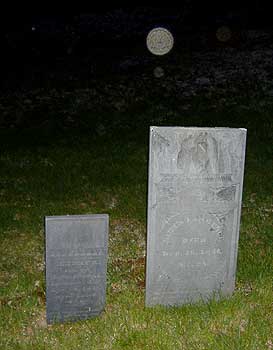 For over six months, I’ve been collecting EVP results from a wide range of paranormal teams and individual ghost researchers. My goal was to see if there are patterns we can use to improve our EVP research techniques.
For over six months, I’ve been collecting EVP results from a wide range of paranormal teams and individual ghost researchers. My goal was to see if there are patterns we can use to improve our EVP research techniques.
After studying hundreds of cases, here are my suggestions for the best EVP results:
1. Ask questions. Ask each question once or twice. Repeating the question doesn’t seem to help. Also, your results won’t improve if you rephrase the question. Phrase it clearly — not using modern slang — and ask it just once or twice.
Remaining silent won’t improve your results. At least 90% of the successful EVP recordings were responses to statements or questions. Allow breaks for the spirit to reply, but don’t just sit in silence. If you’re quiet, the ghost is likely to be quiet, too.
2. Assume that the ghost is male. If you’re using contextual cues, talk about things that will interest a man. (Unless you’re sure the ghost is female, don’t ask about kitchen chores or things classically assigned to women.)
If you have a name for the male ghost, use it. If not, it’s okay to use general references such as, “Sir, we’d like to talk with you.” Or, “Hey, guy, I want some answers.”
3. Expect anger. For the most intense responses, investigators should sound as if they are angry, antagonistic, or afraid. These emotions — even if portrayed in theatrical ways — are likely to resonate with the spirits and evoke a reply.
If anyone on your team is genuinely frightened, or good at venting anger, he or she should be included in your EVP research. The ghosts may be more responsive to real emotions in someone’s voice and demeanor.
(This is not a license to taunt or “provoke” ghosts in cruel ways.)
4. Adjust your recorder for quiet voices. Most voices were recorded at normal or quiet levels. Set your recorder at a high sensitivity level, and — if it’s an option — choose an omni-directional microphone.
(Some microphones only record directly in front of where they’re pointed. Others record anything in the general area, in front of the microphone, in back of it, or on any side. You want the latter, so you’ll record voices and sounds from anywhere around you.)
5. Stay with your recorder. Hardly any EVPs were reported when recorders were set up, and left running while the investigators explored another room or area.
Survey statistics
Over 90% of the EVPs were recorded in response to an investigator speaking or asking questions. Fewer than 10% were recorded when the investigator was quiet, or when the recorder was left running while the team went to another room.
More than 80% sounded like the voices of male adults. The remainder were mostly female adults. Very few sounded like female children. Only one researcher reported recording male children’s voices, and his results seemed like an anomaly; most of his recordings included male children.
An equal number of EVP voices replied in normal or quiet tones. Slightly less than 15% shouted at the investigators, even when the ghost was clearly angry.
In other words, the anger was conveyed with the words used or the tone of voice (including hissing sounds and obvious sneers), not in volume.
Most of the EVPs were clearly related to the comment or question by the investigator (or investigators) recording the EVP session. However, when asked to repeat something (or if a question was repeated with the same or different phrasing), most ghosts did not reply a second time.
About 1/3 of the recordings seemed to include random words and phrases, apparently unrelated to the questions asked. (This ratio seems consistent with results from Ovilus, Puck, and other real-time communication devices.)
When a mood was evident in what was said, the responses were almost equally distributed among the following emotional levels: Apathy, anger, pain, grief, fear, or boredom. Only anger seemed more prevalent, and that was only slightly.
In the future, I’ll be conducting additional surveys related to ghost hunting techniques and practices. I hope you’ll participate, so we can pool our information to improve our research results.
[Thanks to Joanne W. for helping us restore this “lost” article.]


 When our ghost hunting team arrived, I placed the compass on top of Hannah Robbins’ headstone at the northern end of the cemetery.
When our ghost hunting team arrived, I placed the compass on top of Hannah Robbins’ headstone at the northern end of the cemetery.